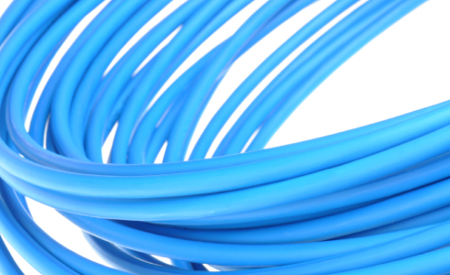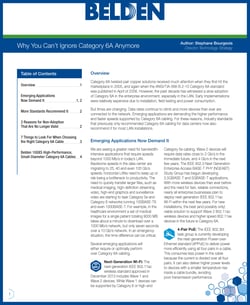Although introduced over a decade ago, the enterprise environment, especially in the LAN, has been slow in adapting Category 6A cabling. When the Cat 6 twisted-pair copper solutions were first introduced, the implementations and installations were considered too expensive for many projects and facilities outside of data centers. But a decade ago, the amount of data used and devices connected to the network was substantially lower.

Emerging applications are demanding the higher performance and faster speeds supported by Category 6A cabling. For these reasons, industry standards that previously only recommended Category 6A cabling for data centers now also recommend it for most LAN installations.
What sets a quality Category 6A cable apart from the rest? There are lots of Category 6A cables out there, but some offer better design, performance and installation than others. How can you select the one that will offer the characteristics you need?
Here are some questions to ask before you invest in a Category 6A cabling system:
-
How easy is it to install?
- Is this Category 6A cable thinner and rounder than others?
- Does it feature easy-to-remove splines and barrier tape?
- How easy is it to separate pairs?
-
How big and bulky is the cable?
- Are increased size and weight kept to a minimum?
- Will there be problems fitting this Category 6A cabling into existing cable trays or conduit?
-
What is the bend radius?
- Will the cable's bend radius work inside wall cavities and other tight spaces?
- Will we maintain maximum airflow between racks with this cabling system?
-
Can the Category 6A cable support the full 100-meter distance?
- Can this cable support the full 100-meter distance per channel?
- Can we use the cabling system for top-of-rack, end-of-row or middle-of-row configurations?
-
Has the cabling system been recognized for innovation and excellence?
- Industry recognition can pinpoint cabling solutions that offer performance and design improvements. Belden’s new 10GXS cable overcomes the initial challenges of 6A Cabling – as a result, it was honored with a Silver Level Innovators Award from Cabling Installation & Maintenance. Belden’s 10GXS makes 10G-capable Category 6A cabling a possibility for many data center managers who would typically deploy cable with less-than-Category-6A capability due to space constraints.
Download Belden's guide to learn "Why You Can't Ignore Category 6A Anymore"
For more information on Belden's new 10GXS cable solutions or for any other questions, please contact your local Accu-Tech representative today!



.png?width=58&height=58&name=X_logo_2023_(white).png)
